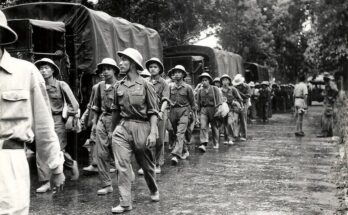
Introduction:
The concept of cyborgs, or enhanced humans, has evolved from science fiction to a tangible reality as technology increasingly integrates with the human body. This integration raises questions about the future of human augmentation, its ethical implications, and societal acceptance.
Understanding Cyborgs
Cyborgs, defined as beings with both biological and artificial components, can range from individuals with simple prosthetics to those with advanced neural implants. The term itself combines “cybernetic” and “organism,” emphasizing the blend of human and machine capabilities. According to the Merriam-Webster dictionary, a cyborg is essentially a “bionic human,” while the Britannica expands this to include individuals whose abilities surpass those of normal humans due to mechanical or electrical devices.
Levels of Human Augmentation
Human augmentation can be categorized into three levels:
- Replication: This includes devices that replicate functions humans already possess, such as prosthetics, hearing aids, and glasses.
- Supplementation: This level enhances human capabilities beyond normal limits, exemplified by technologies like exoskeletons for increased strength and brain-computer interfaces like Neural link.
- Exceeding Human Ability: This futuristic category includes speculative technologies such as nanobots and synthetic memory chips, which could enable abilities far beyond current human capabilities.
Current Examples of Cyborg Technology
Several real-life examples highlight the advancements in cyborg technology:
- Neil Harbisson: Born colorblind, he uses an antenna that converts light frequencies into sound, allowing him to “hear” colors, including those beyond the visible spectrum. He is recognized as the first legally recognized cyborg.

- Zac Vawter: An engineer who lost his leg, he became the first person to use a mind-controlled bionic leg, enabling him to climb the Willis Tower in Chicago.

- Rob Spence: After losing an eye, he created a prosthetic eye equipped with a camera that transmits video wirelessly, showcasing the potential for functional enhancements.
Societal Perspectives and Concerns
A recent study indicates growing support for human augmentation, particularly for existing technologies like pacemakers. However, there are significant concerns regarding equity, with many fearing that such enhancements may only be accessible to the wealthy. Additionally, issues like device malfunction and cybersecurity threats are prevalent worries among the public. Experts suggest that societal acceptance of cyborgs will evolve over time, especially as successful applications become more common. The integration of technology into human life is not new; as one expert noted, even simple tools like arrows can be seen as extensions of human capability, suggesting that we have always been cyborgs to some extent.
What are the ethical implications of creating cyborgs?
The ethical implications of creating cyborgs are multifaceted and complex, touching on issues of identity, autonomy, equity, and societal impacts. As technology advances and the integration of human biology with machines becomes more feasible, several key ethical considerations arise.
Identity and Autonomy
One of the primary concerns is how cyborg enhancements might alter an individual’s identity and autonomy. The merging of human consciousness with technology raises questions about the essence of being human. If a person’s thoughts or emotions can be influenced by external devices, the integrity of their personal identity may be compromised. This leads to ethical dilemmas regarding consent and the extent to which individuals can make autonomous decisions about their enhancements.
Equity and Access
The potential for creating classes of cyborgs based on access to technology is another significant ethical issue. If enhancements are available only to certain socio-economic groups, this could exacerbate existing inequalities and create a society divided between enhanced and non-enhanced individuals. This disparity raises questions about fairness and justice in the distribution of technological benefits and the rights of those who may be left behind.
Regulation and Governance
The regulation of cyborg technology presents a challenge, as the diversity of potential enhancements complicates the establishment of universal laws. There is a need for clear definitions and classifications of cyborgs to develop appropriate legal frameworks that ensure safety and ethical standards. Without such regulations, there is a risk of misuse or unintended consequences of cyborg technologies, which could lead to harm or exploitation.
Historical Context and Eugenics
The ethical landscape of cyborg creation is also intertwined with historical movements, such as eugenics. The desire to enhance human capabilities can echo past ideologies that sought to control human evolution, raising concerns about the moral implications of “designing” humans. This connection necessitates a careful examination of the motivations behind cyborg enhancements and the potential for societal harm if such technologies are not ethically managed.
What are the potential consequences of cyborg technology on human identity
The potential consequences of cyborg technology on human identity are significant and multifaceted. As humans increasingly integrate with machines, the line between self and technology becomes blurred, raising questions about personal identity, autonomy, and the essence of being human.
Identity and Autonomy
One of the primary concerns is how cyborg enhancements might alter an individual’s identity and autonomy. The merging of human consciousness with technology raises questions about the integrity of personal identity. If a person’s thoughts, emotions, or physical abilities are influenced by external devices, their sense of self may be compromised. This leads to ethical dilemmas regarding consent and the extent to which individuals can make autonomous decisions about their enhancements.
Equity and Access
The potential for creating classes of cyborgs based on access to technology is another significant concern. If enhancements are available only to certain socio-economic groups, this could exacerbate existing inequalities and create a society divided between enhanced and non-enhanced individuals. This disparity raises questions about fairness and justice in the distribution of technological benefits and the rights of those who may be left behind.
Regulation and Governance
The regulation of cyborg technology presents a challenge, as the diversity of potential enhancements complicates the establishment of universal laws. There is a need for clear definitions and classifications of cyborgs to develop appropriate legal frameworks that ensure safety and ethical standards. Without such regulations, there is a risk of misuse or unintended consequences of cyborg technologies, which could lead to harm or exploitation.
FAQS
Cyborg technology, which integrates human biology with mechanical systems, raises numerous frequently asked questions (FAQs) regarding its implications, uses, and ethical considerations. Here are some key points based on the search results:
What is a Cyborg?
A cyborg, or cybernetic organism, is a being that combines both biological and artificial components. This can range from simple prosthetics to complex integrations like neural implants that enhance or restore human functions.
What are the Types of Cyborgs?
Cyborgs can be categorized into two main types:
- Restorative Cyborgs: These technologies aim to restore lost functions, such as prosthetic limbs or cochlear implants that help regain hearing.
- Enhanced Cyborgs: These aim to exceed normal human capabilities, potentially offering superhuman strength, speed, or cognitive abilities.
How Does Cyborg Technology Work?
Cyborg technology often involves sophisticated interfaces that connect biological systems with mechanical devices. For instance, advanced prosthetics can be controlled by brain signals, allowing users to perform complex movements. Technologies like Targeted Muscle Reinnervation (TMR) translate neural signals into actions for prosthetic limbs.
What are the Ethical Implications?
The integration of technology into human biology raises ethical questions about identity, autonomy, and equity. Concerns include the potential for creating a divide between those who can afford enhancements and those who cannot, as well as the implications for personal identity when technology significantly alters human capabilities.
Are There Real-Life Examples of Cyborgs?
Several notable examples include:
- Neil Harbisson: He has an antenna implanted in his skull that allows him to “hear” colors, effectively enabling him to perceive the world in a way that transcends natural human capabilities.
- Zac Vawter: He used a mind-controlled bionic leg to climb the Willis Tower, showcasing the potential of advanced prosthetics to restore mobility.
- Rob Spence: Known as the “Eyeborg,” he replaced his missing eye with a camera-equipped prosthetic that can record video.
Read Related Post
History of General Motors: American Multinational Automotive Manufacturing Company


